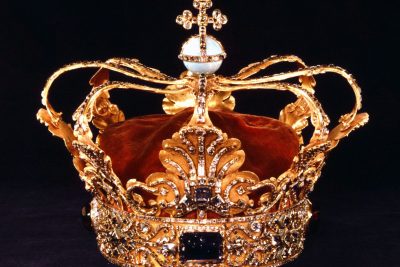
Sea Shares: The Rise and Fall of the South Sea Bubble

The South Sea Bubble represents one of the most infamous financial crises in British history, characterized by the wild speculation surrounding sea shares issued by the South Sea Company. This event epitomizes the risks and consequences of unchecked greed in financial markets, serving as a cautionary tale for investors even today. Established in 1711, the South Sea Company initially aimed at lucrative trade opportunities in Spanish America but soon became mired in a tumultuous financial environment that would lead to its dramatic rise and fall.
In the years leading up to the bubble, the promise of wealth from the company's activities created a frenzy of investment that drew in citizens from various social classes. The combination of governmental support, speculative enthusiasm, and deceptive practices ultimately resulted in a catastrophic financial crash. This article explores the rise and fall of the South Sea Bubble, elucidating its causes, major events, and the lasting legacy it left on British society.
- Overview of the South Sea Company
- The Speculative Frenzy of 1720
- Initial Success and Promising Returns
- The Role of King George I
- The Surge in Stock Prices
- The Collapse of the Market
- Financial Ruin and Societal Impact
- The Parliamentary Inquiry and Corruption
- The Aftermath and Rise of Robert Walpole
- The Legacy of the South Sea Bubble
- Conclusion: Lessons Learned from History
Overview of the South Sea Company
The South Sea Company was founded in 1711 and granted a monopoly on trade with the Spanish colonies in South America, particularly dealing in slaves, which was a highly lucrative, albeit morally questionable, venture. The British government endorsed the company as it was viewed as a potential means of reducing the national debt through innovative financing. The company's initial goal was to trade south by seas and capitalize on the promising, though perilous, opportunities present in that part of the world.
While the Treaty of Utrecht in 1713 opened some trading routes, it also limited the company’s activities, creating pressures that would soon manifest in volatility. The South Sea Company's potential was piqued following a successful initial voyage, igniting enthusiasm among investors who viewed it as a golden opportunity for profit. Initially, the company's stocks commanded a decent share price, corroborating the optimistic outlook regarding its financial prospects.
The Speculative Frenzy of 1720
As 1720 unfolded, the speculative fervor around sea shares became an unstoppable tide. Investors, including members from the upper echelons of society, began pouring their funds into the company, driven by the allure of quick riches. Many had no understanding of the actual business viability of the South Sea Company but were entranced by its promise and burgeoning reputation.
This was exacerbated by the fervor of the market, where tales of both fortune and extravagant lifestyles made headlines. Individuals who previously had little knowledge of investing became armchair financiers participating in the rush to own shares that were skyrocketing in value. As sea shares soared in price, the marketplace transformed into an arena for speculative trading, with little regard for actual company performance or economic fundamentals.
Initial Success and Promising Returns
At the onset of 1720, the South Sea Company saw its stock price jump to unprecedented levels. By January, shares were valued at around 128 1/2, but the excitement rapidly escalated; by August, they had risen above 1,000. The rapid appreciation of stock prices fueled a feeding frenzy among investors and ordinary citizens alike, with many anticipating extraordinary returns on their investments.
The company’s plan to assume Britain’s national debt was lauded as a significant financial innovation. Investors were encouraged by the prospect of high returns, particularly when the company promised a guaranteed interest rate on its shares. The initial success created an illusion of stability and profitability, encouraging more speculators to invest.
The Role of King George I
The position of King George I played a pivotal role in igniting investor confidence in the South Sea Company. With the king himself taking on the role of governor in 1718, there was a significant perception of legitimacy and stability introduced to the company. His association not only elevated the company’s status but also attracted numerous investors hoping to partake in this royal-backed venture.
As more people flocked to buy sea shares, the king’s involvement reinforced the allure of quick riches, despite the overarching economic realities. The belief that royal endorsement equated to a secure investment further inflated the bubble, pulling in numerous middle-class citizens who previously had no access to such investment opportunities.
The Surge in Stock Prices
The surge in stock prices was nothing short of breathtaking. Over just a few months, the price of South Sea shares skyrocketed, reflecting a rampant speculative mentality among investors. The ability to buy and sell shares almost instantaneously played a significant role in this meteoric rise. By August 1720, were valued at over 1,000, creating a landscape where anyone could join in on the financial bonanza.
However, this euphoric climb was built on shaky ground, with real company profitability and sustainability remaining unproven. The mathematics of the company’s profitability were often obscured by the lure of wealth, as investors were caught in the fervor and momentum surrounding the stock’s impressive trajectory.
The Collapse of the Market
The euphoric rise of the South Sea Company was inevitably followed by a catastrophic fall. By September 1720, financial realities began to seep in, and panic set among investors as they realized the foundations of their fortunes were built not on solid ground, but rather on speculative bubbles. The collapse of the market saw shares falling drastically, from their inflated price back down to 124 by December.
Investors rushed to sell their shares in a desperate attempt to salvage their fortunes, creating a cascading effect that led to widespread financial ruin. The public outcry and devastation caused by the crash resulted in a loss of confidence in financial institutions, banks, and the government.
Financial Ruin and Societal Impact
The financial ruin caused by the collapse of the South Sea Bubble was profound. Many investors, regardless of social standing, lost their life savings. Some prominent figures found themselves destitute, and entire families were left to bear the brunt of this financial disaster. The once joyous anticipation of wealth evaporated into despair, as people realized the extent of their losses.
The societal impact was equally significant. The middle classes, who had ventured boldly into the stock market convinced of their path to wealth, found themselves disillusioned and distrustful. The fabric of society, especially in urban areas, began to fray as individuals struggled with their newfound poverty. Riots broke out in response to widespread unrest, culminating in a financial crisis that affected the entire nation.
The Parliamentary Inquiry and Corruption
In light of the devastation wrought by the South Sea Bubble, the British Parliament conducted an inquiry into the circumstances surrounding the crash. The inquiry sought to address the corruption that appeared rampant within the company and among its supporters. Many individuals in positions of power, including politicians and investors, were implicated in the widespread malfeasance.
Evidence suggested that there had been collusion and deception among board members of the South Sea Company, as well as among other influential figures who benefited from the stock's market manipulation. This inquiry would mark a pivotal moment in British history, shedding light on the need for deeper oversight in financial markets to safeguard against similar crises in the future.
The Aftermath and Rise of Robert Walpole
Following the collapse of the South Sea Company and the public outcry regarding corruption, the political landscape underwent significant changes. Robert Walpole, once just an influential politician, emerged as a central figure in the aftermath. Although he sought to hold individuals accountable, Walpole also understood the necessity of preserving stability in the government.
The fallout from the bubble led to calls for reform, and Walpole leveraged this moment to pave his way toward becoming the first British prime minister. While he was critical of the companies’ practices and sought accountability, he also aimed to protect key political figures, including himself. Walpole’s rise represents a significant shift in British politics, moving toward a more prominent role for the prime minister in managing national affairs.
The Legacy of the South Sea Bubble
The legacy of the South Sea Bubble can still be felt today, providing critical lessons regarding financial governance, investor behavior, and the dangers of speculative trading. The fallout from the bubble led to increased scrutiny and regulations in the financial markets, aimed at preventing such a calamity from reoccurring.
This event also left a lasting imprint on the public consciousness; the term "South Sea Bubble" has since become synonymous with financial speculation and market crashes. Investors today still reflect on the lessons learned from this historical event in hopes of avoiding similar pitfalls.
Conclusion: Lessons Learned from History
The rise and fall of the South Sea Bubble serves as an essential reminder of the dangers inherent in the pursuit of wealth through speculation. This historical episode highlights the extreme volatility that can accompany sea shares and serves as a warning of the potential repercussions of reckless trading practices.
The events surrounding the South Sea Company continue to resonate in today’s financial landscape, emphasizing the need for vigilance, transparency, and clear regulations to safeguard the interests of investors and maintain stability within markets. The South Sea Bubble remains a powerful cautionary tale urging today’s investors to proceed with both enthusiasm and prudence.
Did you find this article helpful? Sea Shares: The Rise and Fall of the South Sea Bubble See more here Education.
Leave a Reply






Related posts